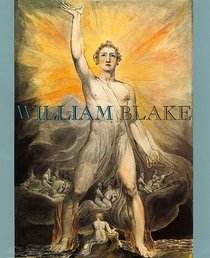Search -
William Blake
William Blake
Author:
The only manuscripts to survive that lead to the production of one of William Blake's published illuminated books are those of the Songs of Innocence and of Experience, his most accessible and best-loved work. Here, one of the world's foremost authorities on Blake's manuscripts and illuminated printing details the evolution of this masterwork an... more »
Author:
The only manuscripts to survive that lead to the production of one of William Blake's published illuminated books are those of the Songs of Innocence and of Experience, his most accessible and best-loved work. Here, one of the world's foremost authorities on Blake's manuscripts and illuminated printing details the evolution of this masterwork an... more »
ISBN-13: 9780810957107
ISBN-10: 0810957108
Publication Date: 3/1/2001
Pages: 304
Rating: ?
ISBN-10: 0810957108
Publication Date: 3/1/2001
Pages: 304
Rating: ?
0 stars, based on 0 rating
Publisher: Harry N Abrams
Book Type: Hardcover
Other Versions: Paperback
Members Wishing: 0
Reviews: Amazon | Write a Review
Book Type: Hardcover
Other Versions: Paperback
Members Wishing: 0
Reviews: Amazon | Write a Review
Genres:
- Arts & Photography >> Individual Artists >> ( A-C ) >> Blake, William
- Arts & Photography >> Individual Artists >> General
- Arts & Photography >> History & Criticism >> Regional >> European
- Arts & Photography >> Art >> Museums & Collections >> General
- Arts & Photography >> Collections, Catalogs & Exhibitions
- Arts & Photography >> Art >> Museums & Collections >> Museums >> General
- Arts & Photography >> Art >> General




